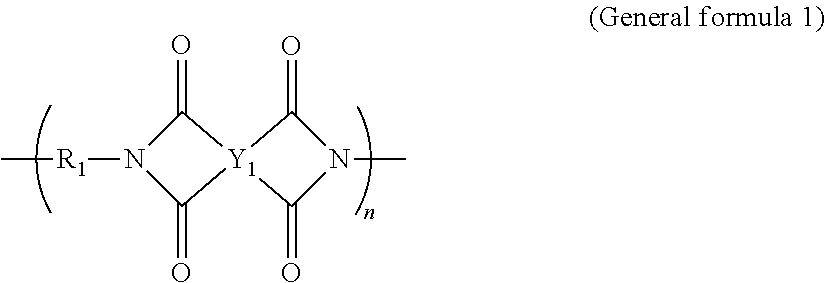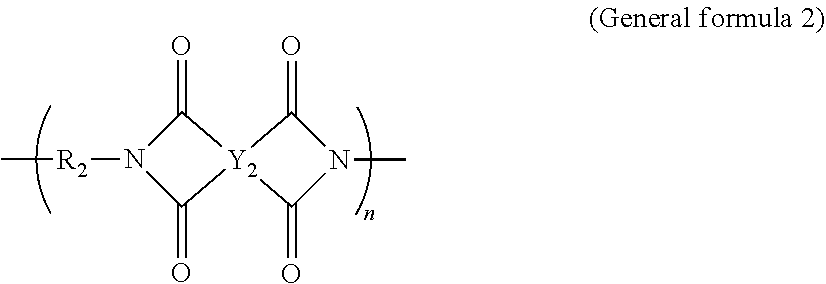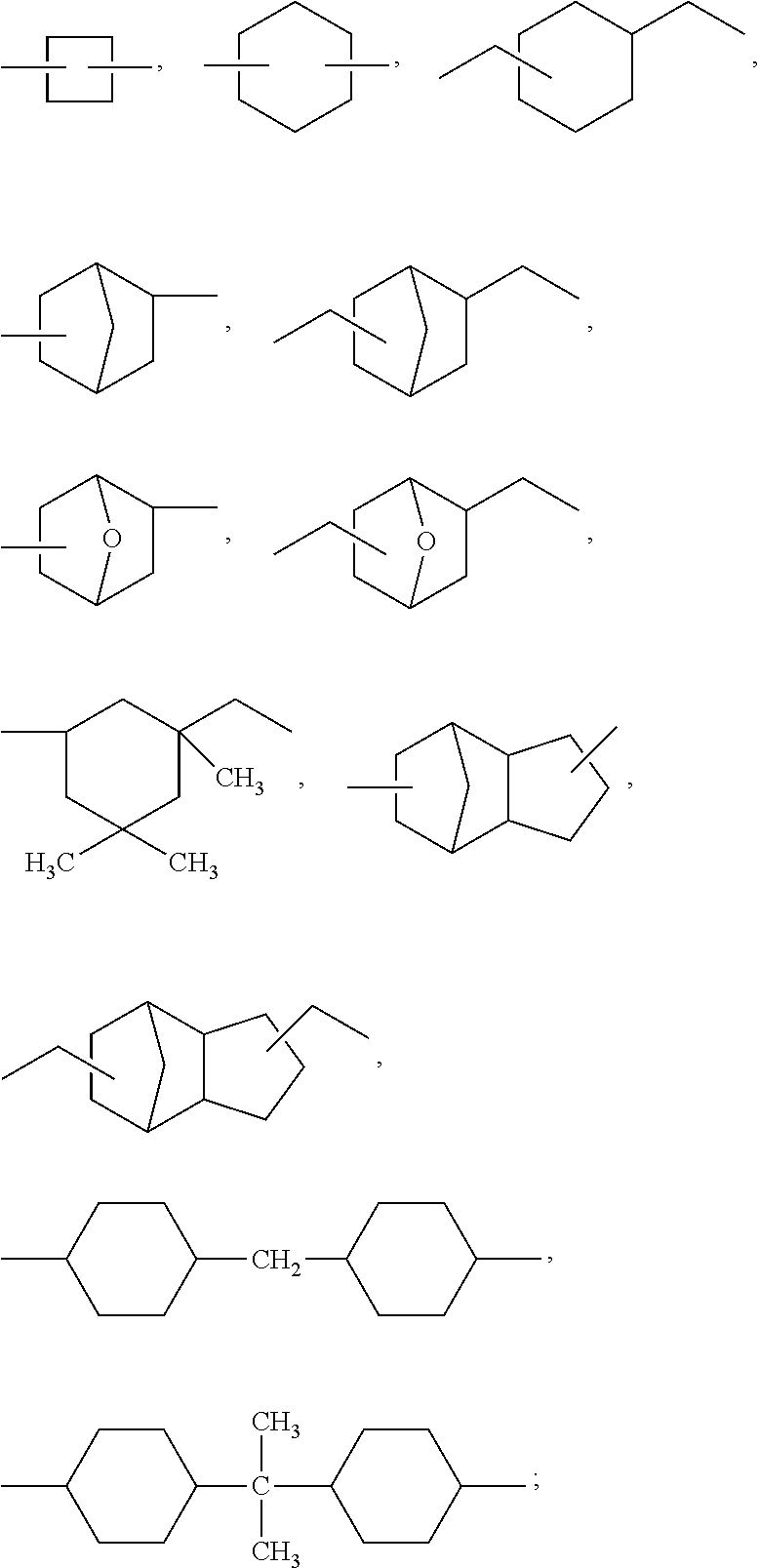Flexible electronic element substrate, organic thin film solar cell, laminated structure and method for manufacturing the same, and method for manufacturing flexible electronic element
a technology of electronic elements and substrates, applied in the direction of final product manufacturing, sustainable manufacturing/processing, synthetic resin layered products, etc., can solve the problems of low flexibility, easy cracking of glass substrates, and needing careful handling, and achieve high visible light transmittance, suppress deterioration, and low ultraviolet light transmittance
- Summary
- Abstract
- Description
- Claims
- Application Information
AI Technical Summary
Benefits of technology
Problems solved by technology
Method used
Image
Examples
example 1
[0157](Forming Fluorine-Based Resin Layer)
[0158]200 μl of fluorine-based resin layer composition obtained by mixing a fluorine-based coating agent 1 (manufactured by 3M Co., Ltd., NOVEC 270) and a fluorine-based coating agent 2 (manufactured by 3M Co., Ltd., NOVEC200) at a mass ratio of 1:1 was dropped onto a peeling substrate made of an inorganic glass plate (alkali glass, 0.7 mm thickness), and spin-coated. The spin coating conditions were 1000 rpm for 60 seconds. Thereafter, the laminate was left at room temperature for 3 minutes to form a fluorine-based resin layer having a thickness of 100 nm on the inorganic glass plate. The surface of the obtained fluorine-based resin layer was subjected to an oxygen plasma treatment. The plasma treatment was carried out for 30 seconds at an oxygen-gas flow rate of 5 sccm and a power of 50 W using PC300 manufactured by SAMCO Co. Ltd.
[0159](Forming Polyimide Substrate (Device Substrate))
[0160]5.71 g (0.05 mol) of 1,4-diaminocyclohexane (CHDA),...
example 2
[0186]In the same manner as in the method for manufacturing the laminated structure described above, a fluorine-based resin layer was formed on the inorganic glass substrate (peeling substrate), and the polyimide substrate (thickness: 1.2 μm) was further formed. The physical properties of the obtained polyimide substrate are the same as the values shown in Table 1 described above.
[0187]An indium tin oxide (ITO) layer was formed on the polyimide substrate of the laminated structure by sputtering method. The thickness of the ITO layer (first electrode) was 100 nm. The obtained ITO layer was subjected to oxygen plasma treatment for 1 minute at an oxygen gas flow rate 5 sccm and the power of 300 W by PC300 manufactured by SAMCO Co., Ltd.
[0188]Subsequently, a solution obtained by dissolving 549 mg of zinc acetate dihydrate and 160 μl of ethanolamine in 5 ml of 2-methoxyethanol was added dropwise onto the ITO layer and spin-coated. The spin coating conditions were 5,000 rpm for 30 seconds...
PUM
| Property | Measurement | Unit |
|---|---|---|
| transmittance | aaaaa | aaaaa |
| thickness | aaaaa | aaaaa |
| thickness | aaaaa | aaaaa |
Abstract
Description
Claims
Application Information
 Login to View More
Login to View More - R&D
- Intellectual Property
- Life Sciences
- Materials
- Tech Scout
- Unparalleled Data Quality
- Higher Quality Content
- 60% Fewer Hallucinations
Browse by: Latest US Patents, China's latest patents, Technical Efficacy Thesaurus, Application Domain, Technology Topic, Popular Technical Reports.
© 2025 PatSnap. All rights reserved.Legal|Privacy policy|Modern Slavery Act Transparency Statement|Sitemap|About US| Contact US: help@patsnap.com



